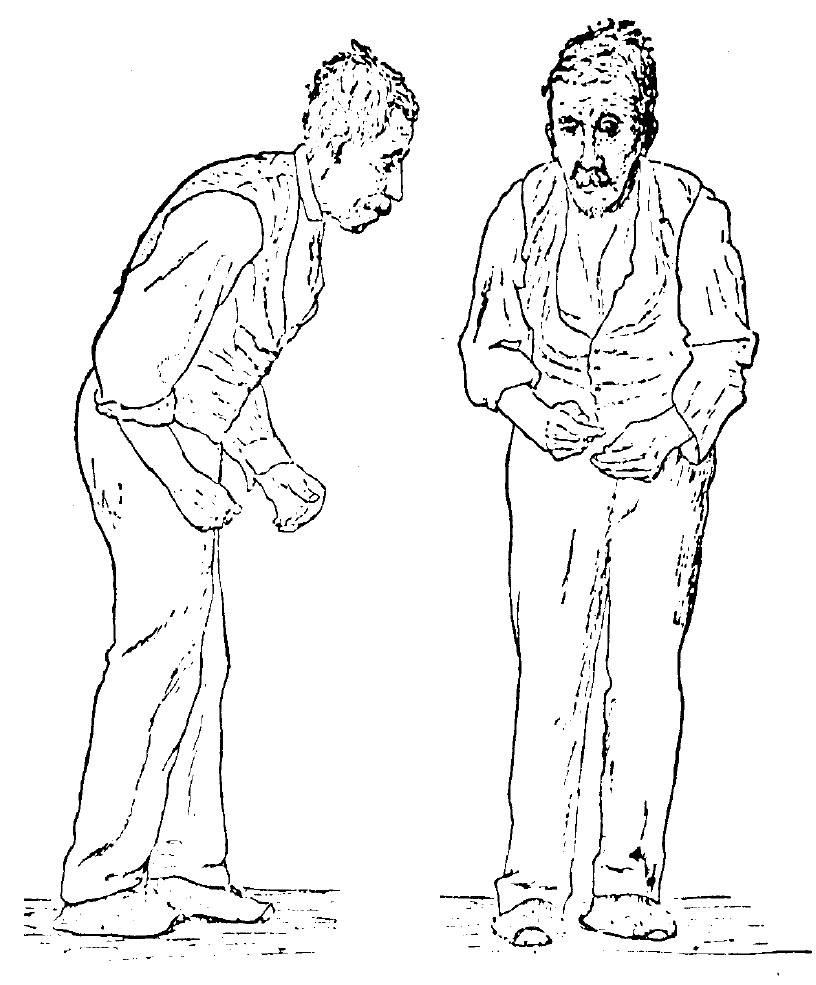Parkinson's disease is a degenerative disorder of the central nervous system characterized by muscle rigidity, tremor, a slowing of physical movement

The symptoms of Parkinson's disease result from the loss of pigmented dopamine -secreting (dopaminergic) cells, secreted by the same cells, in the pars compacta region of the substantia nigra (literally "black substance"). These neurons project to the striatum and their loss leads to alterations in the activity of the neural circuits within the basal ganglia that regulate movement, in essence an inhibition of the direct pathway and excitation of the indirect pathway.

18F PET scan shows decreased dopamine activity in the basal ganglia, a pattern which aids in diagnosing Parkinson's disease (Applications of positron emission tomography (PET) in neurology, 2004)

Pesticides exposure
C'è legame fra pesticidi e morbo di Parkinson
Sussiste una correlazione fra esposizione ai pesticidi e morbo di Parkinson. Precedenti studi avevano dimostrato che i soggetti con morbo di Parkinson hanno il doppio delle probabilità di riportare di essere stati esposti a pesticidi rispetto agli altri, ma pochi studi hanno investigato questo argomento in soggetti della stessa famiglia o valutato le associazioni fra il morbo e specifiche classi di pesticidi. E' stato rilevato che anche frequenza, durata ed esposizione cumulativa sono significativamente associati al morbo di Parkinson in modo dose-risposta. Sia insetticidi che erbicidi aumentano il rischio, e più marcatamente organoclorine, composti organofosforici, clorofenossiacidi/esteri e botanici. Ulteriori indagini su questi specifici pesticidi ed altri potrebbero portare all'identificazione delle vie biologiche inerenti che influenzano lo sviluppo del morbo di Parkinson. La più forte associazione fra il morbo ed i pesticidi si osserva nelle famiglie in cui non si ha un'anamnesi di morbo di Parkinson. Ciò suggerisce che i casi sporadici della malattia possano essere particolarmente vulnerabili agli effetti tossici dei pesticidi, ma non è possibile escludere che i pesticidi influenzino il rischio di morbo di Parkinson anche nelle famiglie in cui la malattia è presente. (BMC Neurology online 2008, pubblicato il 18/4)
Iron deficiency
Brain iron deficiency and excess; cognitive impairment and neurodegeneration with involvement of striatum and hippocampus. 2008 + links
Manganese overload
Sleepiness
Sleepiness in Parkinson's disease. 2009, Arnulf I, Leu-Semenescu S. Parkinsonism Relat Disord. 2009 Dec;15 Suppl 3:S101-4.
Sleep Disorders Unit and Inserm UMR 975, Pitié-Salpêtrière Hospital, Assistance Publique Hôpitaux de Paris, Paris 6 University, Paris, France. isabelle.arnulf@psl.aphp.fr
Abstract
Excessive daytime sleepiness is a disabling and vital problem in patients with PD. It affects around 33% patients and culminates in sleep attacks (without prodroma) in 1 to 4% of the patients. When monitored, short, narcolepsy-like naps with abnormal intrusion of REM sleep during daytime (and hypnagogic hallucinations as wakeful dreams) are observed in 33-41% patients, while other patients display naps with non REM sleep. Although insomnia, sleep apnea and periodic leg movements are common in these patients, there is no clear link between the night events and the level of sleepiness. Patients treated with dopamine agonists are two to three fold more exposed to sleep attacks than those on levodopa, with large variability between patients. Sleepiness may exist, to a lesser degree, before the onset of parkinsonism and before the use of dopamine agents, suggesting that other, disease-dependant factors contribute to the sleepiness. Most arousal systems are indeed damaged in PD brains, including the locus coeruleus (noradrenalin), the pedunculo-pontine nucleus and the basal forebrain (acetylcholine), the median raphe (serotonin), and the lateral hypothalamus (orexin), while histamine dopamine arousal system are normal. Treating patients with stimulants such as modafinil is only partially efficacious, while trials of anti-H3 drugs and sodium oxybate seem more active. Eventually, the recent stimulation of the pedunculopontine nucleus has stimulant or sedative effects in patients, depending on the frequency of stimulation. These results provide new insights into the mechanisms of arousal in PD.
Role of LPS and DHEA. A case report.
Parkinsonism caused by Lipopolysaccharides of Salmonella Minnesota (a Case Report) 2001
parkinson+disease+and+progesterone
Isolation rearing-induced reduction of brain 5α-reductase expression: relevance to dopaminergic impairments, 2011
ROS
REDOX CYCLING AGENTS AND PARKINSON'S DISEASE
Fibrinogen and PCR
parkinson's+disease+and+fibrinogen
PD and PQQ
Parkinson's disease and PQQ
protective effect
DJ-1 / PARK7
PD and Vitamin K2
Parkinson's disease and Vitamin K2
GSH and PD
glutathione and Parkinson's disease
Glutathione and Parkinson's disease: is this the elephant in the room? 2008
At least 2 decades have past since the demonstration of a 40-50% deficit in total glutathione (GSH) levels in the substantia nigra in patients with Parkinson's disease (PD).